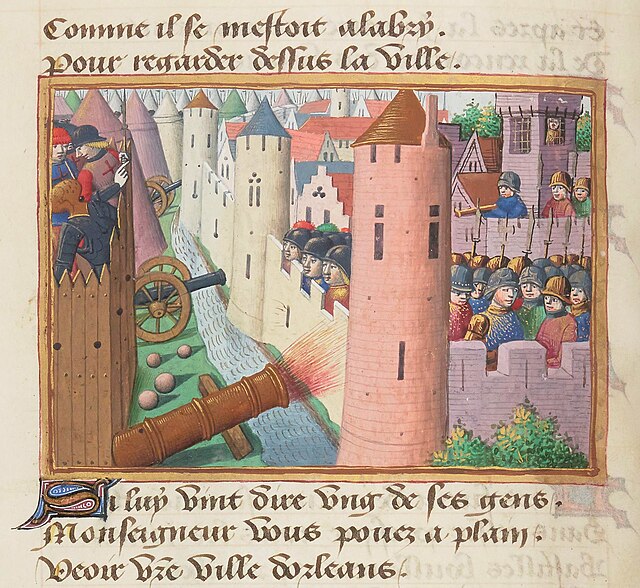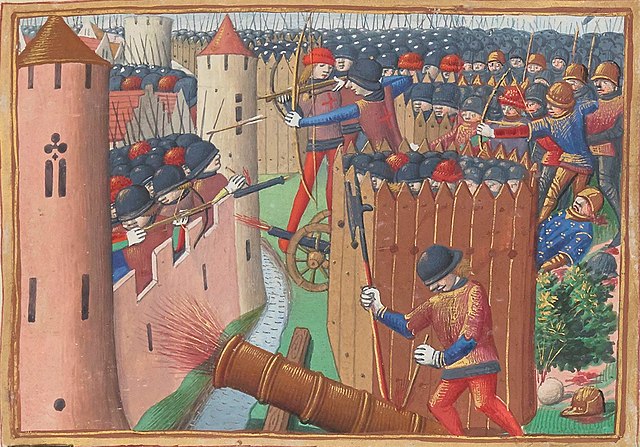The siege of Orléans marked a turning point of the Hundred Years' War between France and England. The siege took place at the pinnacle of English power during the later stages of the war, but was repulsed by French forces inspired by the arrival of Joan of Arc. The French would then regain the initiative in the conflict and began to recapture territories previously occupied by the English.
Joan of Arc at the Siege of Orléans by Jules Eugène Lenepveu, painted 1886–1890
Orléans in 1428–9, the time of the siege
Thomas Montagu, 4th Earl of Salisbury is fatally injured (illustration from Vigiles de Charles VII).
Siege of Orléans, 1429, using cannon fire
The Hundred Years' War was a series of armed conflicts fought between the kingdoms of England and France during the Late Middle Ages. It originated from English claims to the French throne initially made by Edward III of England. The war grew into a broader military, economic, and political struggle involving factions from across Western Europe, fueled by emerging nationalism on both sides. The periodization of the war typically charts it as taking place over 116 years. However, it was an intermittent conflict which was frequently interrupted by external factors, such as the Black Death, and several years of truces.
Clockwise, from top left: the Battle of La Rochelle, the Battle of Agincourt, the Battle of Patay, and Joan of Arc at the Siege of Orléans
Homage of Edward I of England (kneeling) to Philip IV of France (seated), 1286. As Duke of Aquitaine, Edward was also a vassal to the French King (illumination by Jean Fouquet from the Grandes Chroniques de France in the Bibliothèque Nationale de France, Paris).
The Battle of Sluys from a BNF manuscript of Froissart's Chronicles, Bruges, c. 1470.
Battle of Crécy, 1346, from the Grandes Chroniques de France. British Library, London








